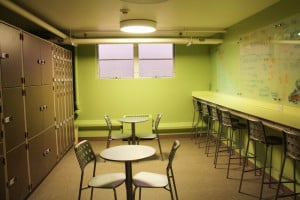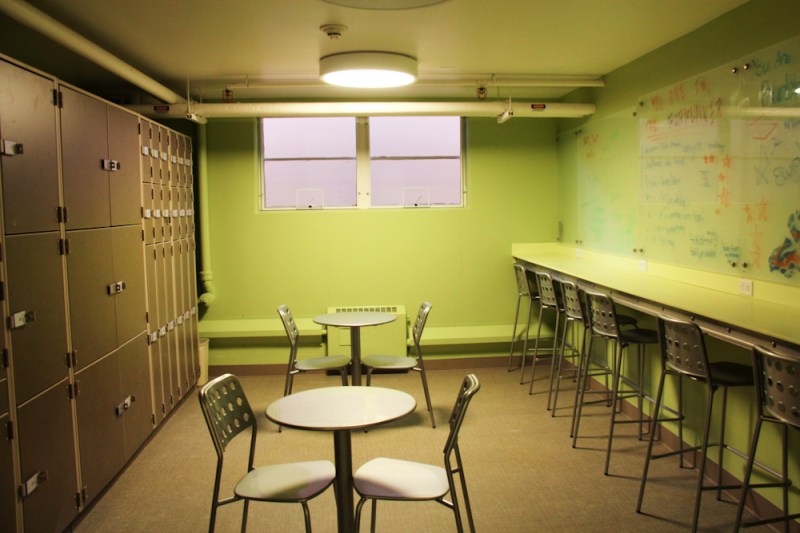Science in the Making: Integrated Learning Environment (SIMILE) and Immersion in the Arts: Living in Culture (ITALIC), two pilot integrated learning environment programs for freshmen, are nearing the end of their first quarter with mixed reviews from students and faculty.
The new programs—which are modeled closely on Structured Liberal Education (SLE) but scaled back in terms of units—have some students wanting more from the programs’ short lectures.

Despite this, Janice Ross M.A. ’75 Ph.D. ’98, professor of theatre and performance studies and faculty director of ITALIC, said students are excited with their experiences thus far.
“We’ve never had such a great group of students who are so enthusiastic and open,” she said.
But, they aren’t the only ones who are enthusiastic. Professors are also excited to teach the material.
“We’ll say, ‘Hey, why don’t you go watch this film before lecture next week?’” Ross said. “We’re calibrating that, not to let our enthusiasm drown the students.”
Ross is eager to reach freshman in particular because they are at the beginning of their Stanford journey.
“We’ve got students on the cusp of beginning at Stanford, and it’s a moment where freshman aren’t cynical about their requirements,” Ross said, citing her experience teaching an Introduction to the Humanities course.
“It used to be this sense that if it was a requirement, you couldn’t enjoy the class,” she added. “There’s none of that going on ITALIC.”
ITALIC offers arts community, opportunities
Despite her overall enjoyment of ITALIC, Reagan Ross ’17 identified lack of class time a limitation of the program.
“I don’t like that our sections are only 50 minutes,” she said. “Everyone’s so opinionated in ITALIC that we don’t have time to get through all of that. I think if we had more time, we could go deeper in lecture.”
However, Ross said she enjoyed the program, and has found it to be a close-knit community of students who are open and willing to share their art.
In line with the program’s central goal, Ross said that ITALIC introduced her to the arts at Stanford.
“ITALIC provides me with a lot of opportunities I don’t think I would have had otherwise,” she said.
Ross added that representatives of student art groups actively recruited people from Burbank. She found out about The Chocolate Heads, an art collective at Stanford, through ITALIC and plans to compose music for the group.
SIMILE met with mixed reactions
SIMILE offers a different immersive experience, one based in the history of science.
Gabriella Godines ’17, a SIMILE student, said she enjoys learning about the evolution of science and reconstructing ancient experiments.
“We have a Science Salon every Tuesday,” Godines said. “We even created an astrolabe, so we got to be able to tell time with just the sun’s shadow.”
Godines thinks that learning science in a historical context is important.
“It’s good to know about the humanities in order to get a better idea of science and medicine,” she said.
Godines said she is excited for the rest of the year, especially when the curriculum progresses towards more contemporary science during winter quarter.
“I’m looking forward to the end of spring, being able to look back at what I’ve done up to that point and see if I’ve really changed that much in terms of my views of science,” Godines said.
Unlike Godines, one SIMILE student—who wished to remain anonymous—is considering dropping the program, citing the discrepancy between student expectations of the program and what it’s actually been.
“We expected it to be more weighted on the science and engineering part, but this quarter we’re focusing more on the origin of science and its relation to religion and historical context,” she said. “Assignments are actually fun, but it’s the lectures that make me feel not as interested. The reading can get pretty dry.”
However, Reviel Netz, a professor of classics and SIMILE lecturer, said he hopes to introduce a long-term hands-on project next year.
“I’m not sure it is practical, but I would like to try to build a catapult and have the students come up with the model,” he said.
Stephanie Eberle, Burbank resident fellow, observed that first-quarter freshmen can sometimes be overwhelmed by the novelty of their experiences. She is encouraged, however, by how the Burbank community has bonded.
“The conversation continues among a unique group of students, faculty, academic and ResEd staff members, each providing their own perspectives,” she said in a statement. “The newness and diversity of the community has made us very strong because there is a feeling that we are all in this together.”
Interaction between the programs
Although the students’ educational experience differs in these two programs, they spend time together in a social setting in Burbank House.
“We definitely hang out a lot,” Ross said. “We have some events that [SIMILE students] can go to but we don’t do lectures or anything like that together.”
Netz said that ITALIC and SIMILE students are similar in that they are both academically adventurous groups of students.
“I find the psychological makeup of the ITALIC and SIMILE students to be quite comparable,” he said. “It’s basically those students who want to explore.”
Netz believes that SIMILE and ITALIC have the potential to become models for residential learning programs at other universities.
“What I hope is that we become a template,” he said. “It’s so supremely important to teach science in this way.”
Contact Gwynn Lyons at glyons ‘at ’stanford.edu.
